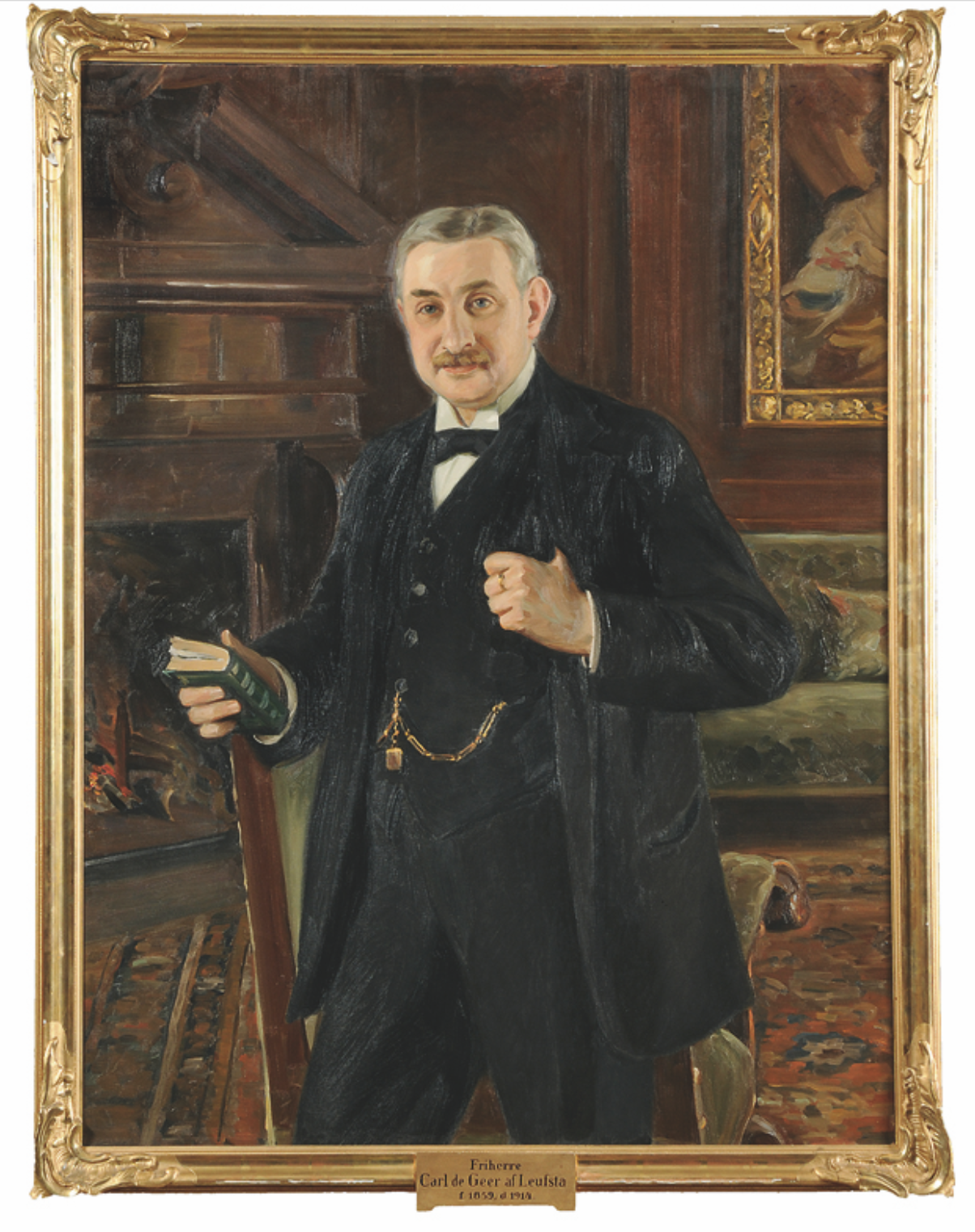Christmas past at Lövstabruk
By Karin Monié. Translation: Aidan Allen
Christmas celebrations at Lövstabruk were an elaborate tradition. They provided light for the hard-working inhabitants, and especially joy and festivities for the children. Those who took part, over a century ago, have told of their experiences. The era was characterised not least by Baron Carl de Geer, who died in August 1914 of diphtheria, when an epidemic of this once serious disease swept through the area.
Holiday preparations began in the autumn. The laundry had to be finished before the lakes froze over in early November. Then it was time to butcher the animals, make lutfisk (a fish dish), brew beer and bake.
Everyone at Lövstabruk, as a rule, had their own pig that was killed three weeks before Christmas. The pigs were often big, the butchers usually amateurs who armed themselves with the necessary tools: a heavy wooden mallet, steel bolt, knives from the smithy, and a rope for the snout. At five in the morning the bloody business began. The women kept an eye on everything. They ensured the butcher’s table stood ready, kept the big 50-litre pan full of hot water, checked the baking tray was filled with coarse rye flour, and made sure the coffee pot was warm. There was no time to lose. And the light was poor. The butchering had to be completed by seven o’clock, when the ironworks began for the day. Children often found the experience terrifying.
When the beer was brewed the 50-litre pan was used again. There was a brewhouse at Lövstabruk, but it was not big enough for everyone. Many brewed beer at home in the kitchen, well prepared with containers.
Next came the Christmas baking, which usually took a couple of days. Lövstabruk bakehouse was used mainly by the clerical workers; everyone else made do at home in the kitchen. The baking consisted of white crispbread made from skimmed milk and wheat flour, vörtbröd (similar to malt loaf, made from brewing wort), and buns, saffron bread and gingerbread biscuits. Once the work was done, the kitchen was scrubbed clean and fresh rag mats were laid down.
On the day before Christmas Eve all forge work ceased. The trip hammers fell silent, a sure sign that the holiday was approaching. Each shiftworker washed off the week’s soot at home in a wooden bathtub. At 12 noon on Christmas Eve, a small number of local paupers were invited to the manor house, where Miss Pousette distributed traditional Christmas alms: two large round buns, one of wheat and the other of rye, a candle, a small piece of beef or pork, and a few coins
At the school, children gathered at four o’clock around two big Christmas trees. They were served Christmas twist buns, red apples, and Christmas sweets. Older children were each given a Christmas magazine, Jultomten or Julklappen, and a present too. For the girls this meant fabric, a hair ribbon and stockings, whereas the boys received a pocket knife, braces or a handkerchief. Then the priest wished everyone happy Christmas before the children, one by one, were presented to bow or curtsy before Baron Carl, who had footed the bill.
Large candles lit the length of the main street and the manor-house park. A light shone at every manor-house window. The church had been beautifully decorated, supervised by the head gardener Mr Strindberg, with juniper garlands and Christmas trees, a beautiful tradition that was long maintained. Christmas morning was a veritable festival of light, when no one needed to walk in darkness.
On New Year’s Eve, prayers were said in church and candles were lit on the street and in the park. On Twelfth Night another party was held at the school for the children with buns, biscuits and games. And real coffee was served too, all supervised by Miss Pousette, who laid the refreshments on long tables prepared with white tablecloths.
On Boxing Day, the baron held a party at the manor house for the Lövstabruk clerks, priests (all seven of them), the local doctor, pharmacist and the school teacher. After champagne toasts had been proposed on the first-floor reception room, the guests enjoyed the baron’s generosity of Christmas delicacies served by his butler Åhrman, who was aided by a servant and various women. Many of the clerks had travelled in from Tobo and Karlholm, and following the party they returned home in kolryssar, large baskets for transporting charcoal, pressed into service as sleds. Elk hides guarded against the winter cold.
Today, over a century later, Lövstabruk celebrates with a winter market on the second weekend in Advent. A church concert is held to the sounds of the organ. The manor house, decorated for Christmas, entices visitors with guided tours. Gifts are available to buy at the Hantverkets Hus shop. And the restaurant will hopefully soon be able to serve tasty Leufsta beer.
Litteratur:
Birger Steen, Baronernas Leufta. Om brukslivet i norra Uppland på baronernas tid. Efter f. Brukskamreren Joel Godeaus berättelser. 1966
Vilhelm Monié, Minnen från Leufsta bruk 1900–1927. Sollentuna 2000.
The manor house in winter finery. photo: Erik Hamberg, 2018.
The manor-house kitchen at Christmas time. photo: Erik Hamberg, 2018.
Christmas decorations in the church. Leufsta bruk archive.
Carl de Geer or “good baron Carl” (1859–1914). Portrait at Lövstabruk manor house. photo: Gabriel Hildebrand, 2018.




